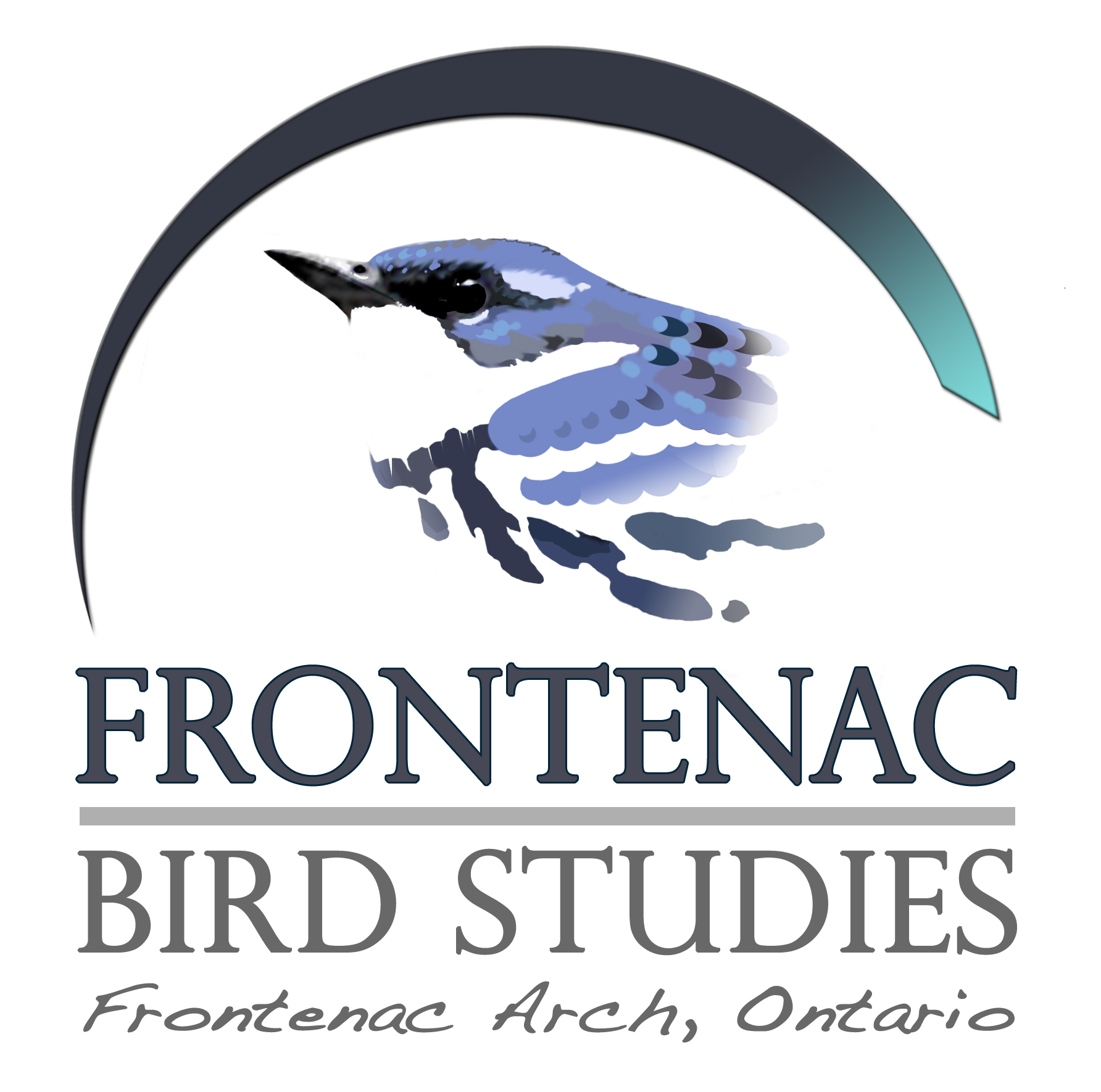
This will have to be quick update on our MAPS progress as I will be up at 3am in the morning for the second visit to the Rock Ridge site in Frontenac Park. We visited Maplewood Bog (MABO) for the second time this season on June 14th. The weather was splendid and the fieldwork was even better as a total of twenty birds were captured, of which six were recaptures of birds banded during our first visit on June 6. The forest birds seemed a little quieter than last time but activity picked up as the sun rose and the heavy dew was burned off. Perhaps the most interesting of the captures was a pair of Yellow-rumped Warblers in net 2 at about 6am. There is quite a large contingent of Yellow-rumps breeding in a nearby pine forest but we hadn’t noticed any at the station until these two showed up in the nets. Both the male and female showed evidence of active breeding so they likely have or had a nest nearby.

This is the location of our banding station for the duration of the morning. This spot is next to a long and narrow clearing next to the main bog. The clearing seems to be a key “highway” of sorts where lots of adult birds congregate. The three nets along the edge of the clearing should be quite productive later in the season when the juveniles and adults move to more open and successional habitats to forage.

This is the largest of several bogs at the site, which all have complete rings or moats of deepish water along the perimeter and thick mats of sphagnum moss. Water Arum and irises have started to bloom along the water’s edge. It would be possible to walk on the moss if you could get past the moat but you would slowly sink and get very wet-very quickly (trust me on that one!). I suppose one could stay dry by skittering along really fast like a Western Grebe in courtship display but there wouldn’t be much point in doing such a thing:). The shrubs and stunted conifers in the middle of the blog always seem to have a large population of nesting birds but they are quite inaccessible to the terrestrial nest searcher/bander.

In addition to the six hours of mistnetting and banding, we also compile a daily breeding status code for each species recorded at the station. This information helps to weed out the actual breeders from transients and non-breeding residents. Seabrooke and I are often watching for adults carrying food or nest material and also keeping an eye out for recently fledged young.

The Veery nest (detailed earlier here) is located in a small juniper near one of our net lanes, which has given us a convenient window into the world of a pair of Veerys raising a family. Our first capture of the morning was of an adult female with a caterpillar intended for one of these gaping maws. We later caught the male with another green caterpillar! It always amazes me how fast the eggs and chicks develop. Just nine days ago this nest contained five eggs and is now full to the brim with five chicks who already have their primaries coming through. Our next visit won’t be for another six to seven days, by which time these chicks will have fledged. These young Veerys, less than a week old, will begin a perilous southbound journey to central and southern Brazil in just a month or two from now.
A summary of results for our visit is provided below. Lights out…
Maplewood Bog- Visit 2 of 7
Banding Results
Yellow-rumped Warbler-2
Black-capped Chickadee-1
Veery-4
Rose-breasted Grosbeak-2
Gray Catbird-2
Yellow-bellied Sapsucker-2
American Robin-1
Recaptures
Ovenbird-1
Northern Waterthrush-2
American Redstart-1
Veery-2
Notable Observations
Chestnut-sided Warbler
Wood Thrush (nest found)
Ovenbird (nest found)
Yellow-billed Cuckoo
Yellow-throated Vireo
Red-shouldered Hawk

Thought about stilts? :o) I hear they do wonders for mossy bogs. It would give you yet another ‘interesting’ thing for your CV!
Did those green caterpillars make it to the ravenings?!
Thanks again.